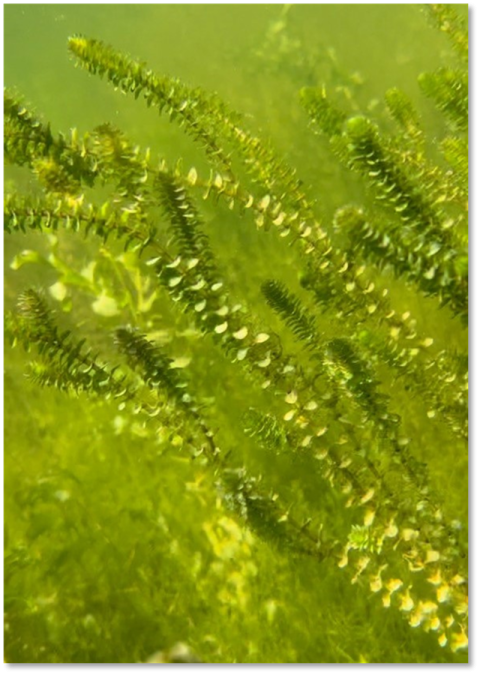States
AlaskaThis project will strive to complete the eradication of elodea, the first documented aquatic invasive plant in Alaska. Elodea was discovered in two waterbodies in interior Alaska and this project will prevent the spread of elodea from the existing infestations, allowing state and federal agencies to advance towards the goal of eradicating elodea in the Yukon River Basin. If the spread of elodea is not controlled, it may result in irreparable damage to freshwater resources that Alaskan communities rely on for subsistence and transportation.
Project Quick Facts:
| Location | Alaska |
| Project Funding | $234,000 |
| Key Species | Elodea |
| Partner Project Lead | Fairbanks Soil and Water Conservation District |
The Rapid Response Fund
The U.S. Department of the Interior, as part of the Bipartisan Infrastructure Law Bipartisan Infrastructure Law
The Bipartisan Infrastructure Law (BIL) is a once-in-a-generation investment in the nation’s infrastructure and economic competitiveness. We were directly appropriated $455 million over five years in BIL funds for programs related to the President’s America the Beautiful initiative.
Learn more about Bipartisan Infrastructure Law authorization for ecosystem restoration, invested $1 million in 2023 to establish a pilot Rapid Response Fund for Aquatic Invasive Species with an additional $1 million envisioned each year 2024 through 2026 as part of advancing a National Early Detection Rapid Response Framework. The Rapid Response Fund is intended make financial resources available to assess and support response actions for quick containment or eradication of newly detected invasive species invasive species
An invasive species is any plant or animal that has spread or been introduced into a new area where they are, or could, cause harm to the environment, economy, or human, animal, or plant health. Their unwelcome presence can destroy ecosystems and cost millions of dollars.
Learn more about invasive species , thus avoiding costly long-term and wide-spread control efforts.
The Aquatic Invasive Species Program
The Service's Aquatic Invasive Species program safeguards waterways and communities from invasive species by working with partners and educating the public. Our regional coordinators work closely with the public and private sector partners and our network of conservation offices to conduct on-the-ground control projects and early detection surveillance and monitoring, and provide technical support. The Service also develops regulations to prohibit the importation and some transport of harmful species known as injurious wildlife and serves as a co-chair to the Aquatic Nuisance Species Task Force.






